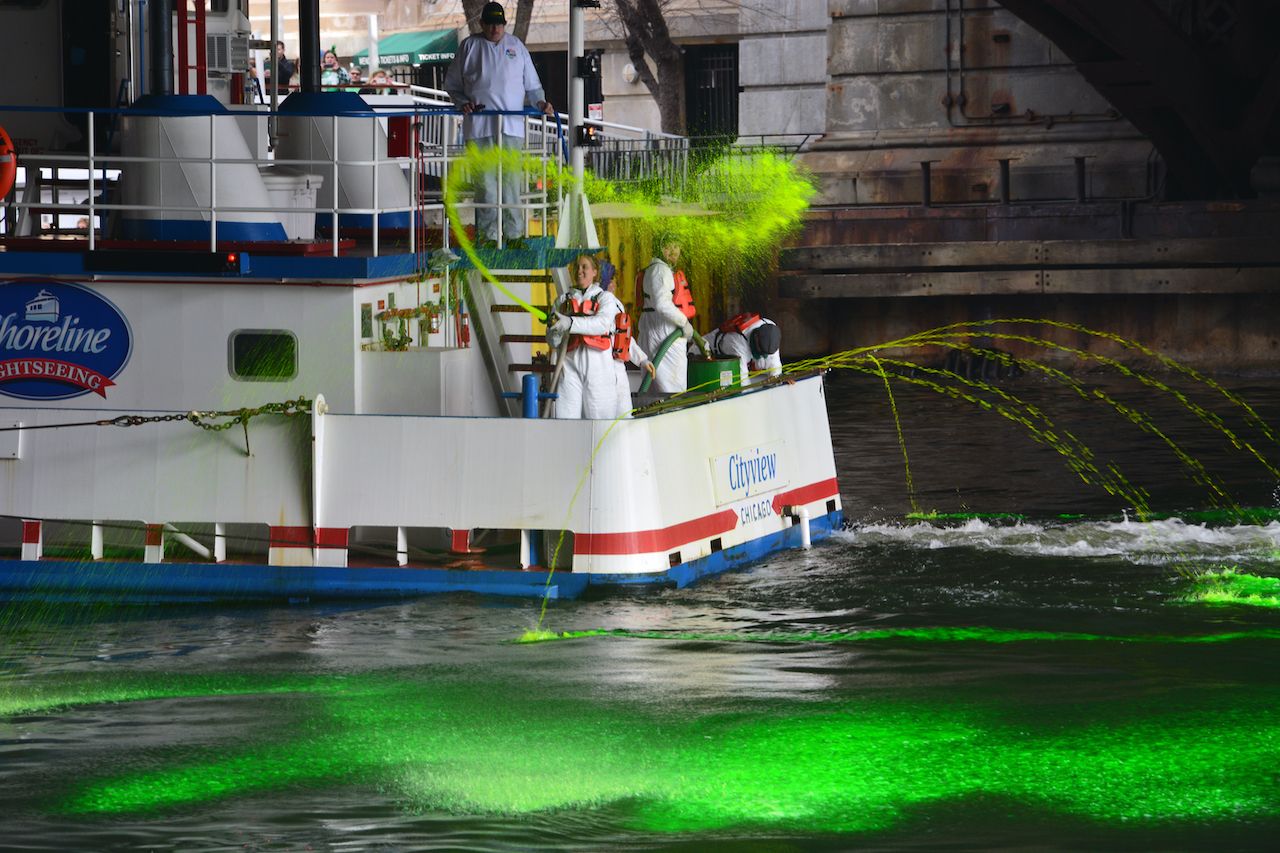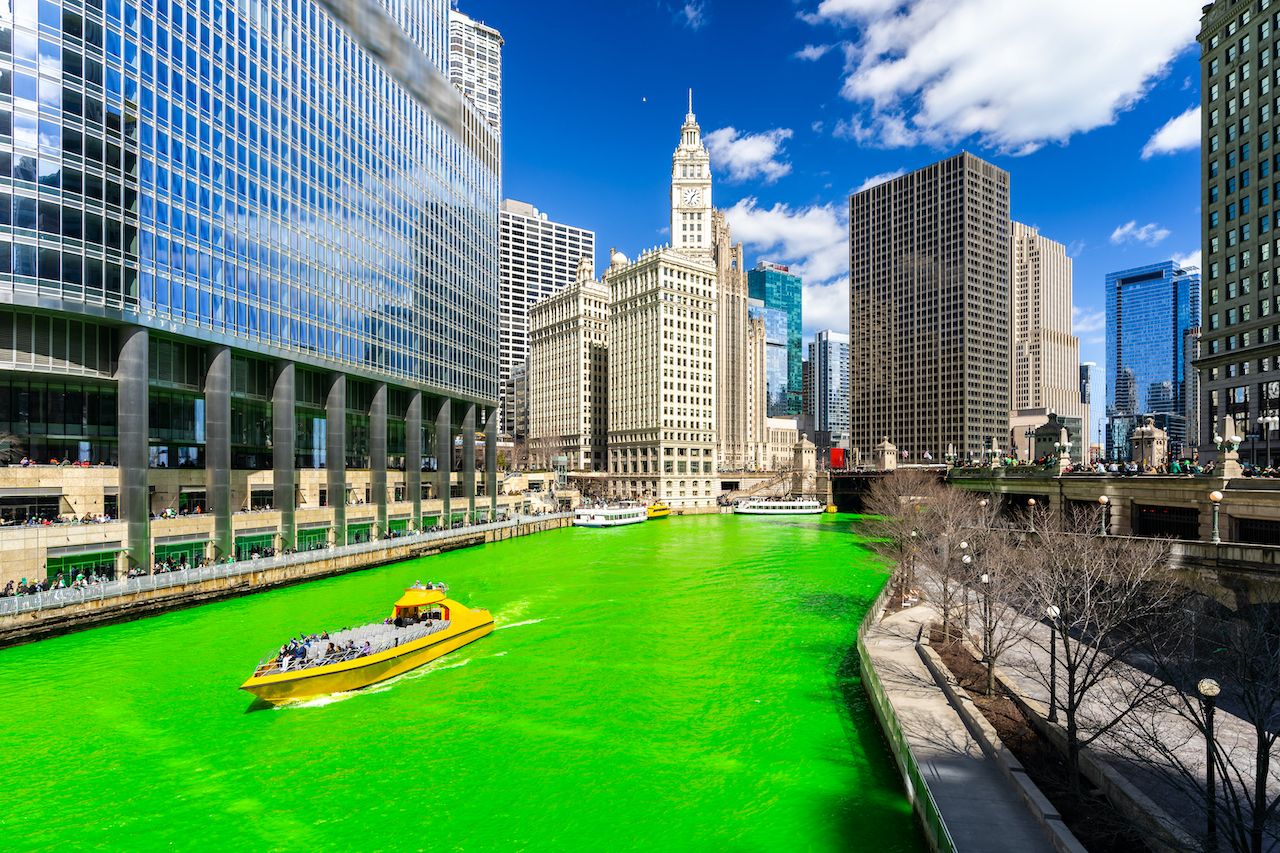Somewhere in history the color green became synonymous with St. Patrick’s Day.
Though early depictions of St. Patrick, who’s revered for bringing Christianity to Ireland, dressed the missionary in blue, it only takes a nanosecond at a 21st-century St. Patrick’s Day celebration to confirm that the color scheme has changed.
Today, green is the definitive color of St. Patrick’s Day, which Irish immigrants in the US evolved from a feast honoring St. Patrick’s death to an all-out, monochromatic party. The beer is green. The gaudy shamrock glasses are green. Even a quarter-mile of the Chicago River runs green for the patron saint of the Emerald Isle.


